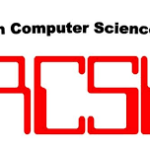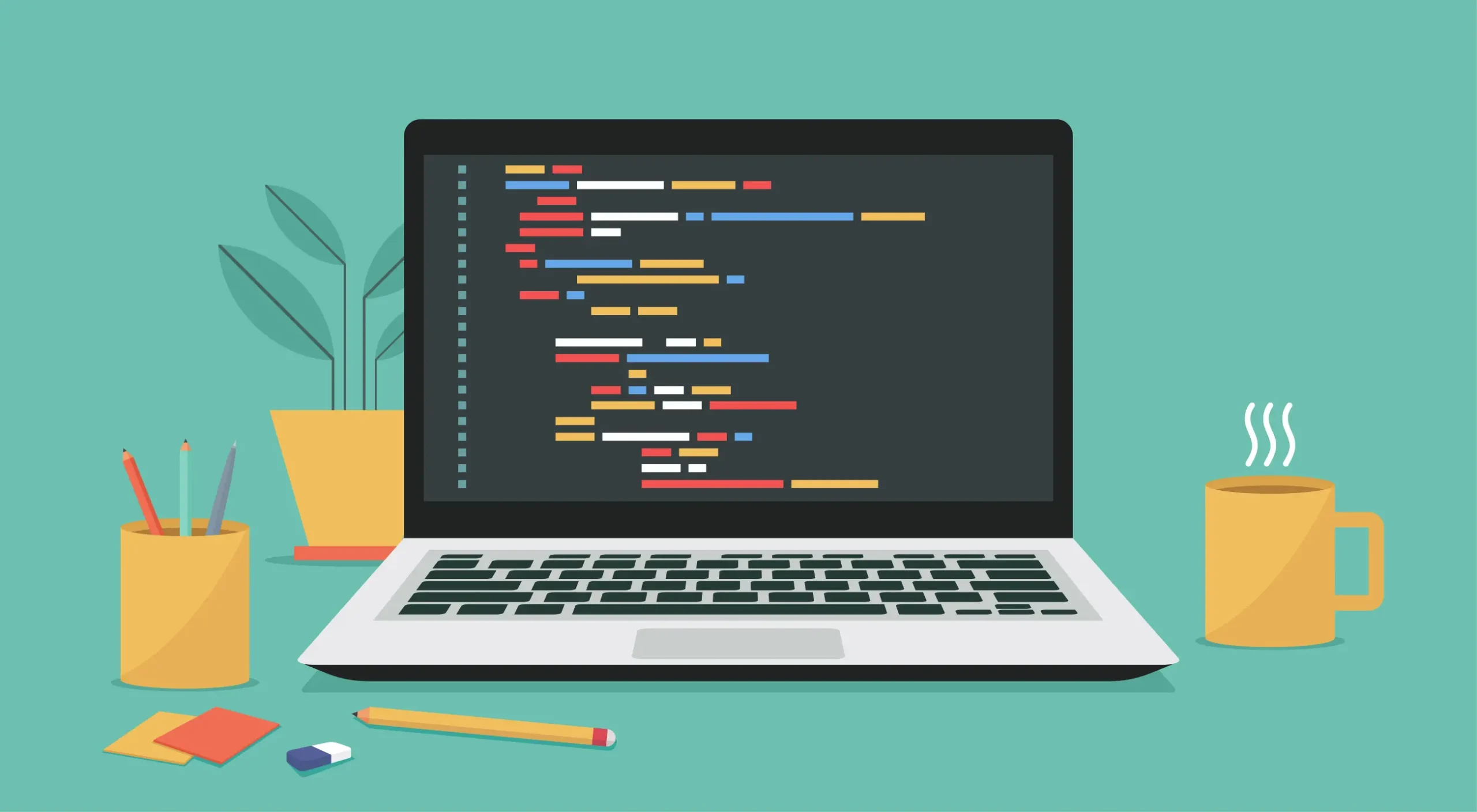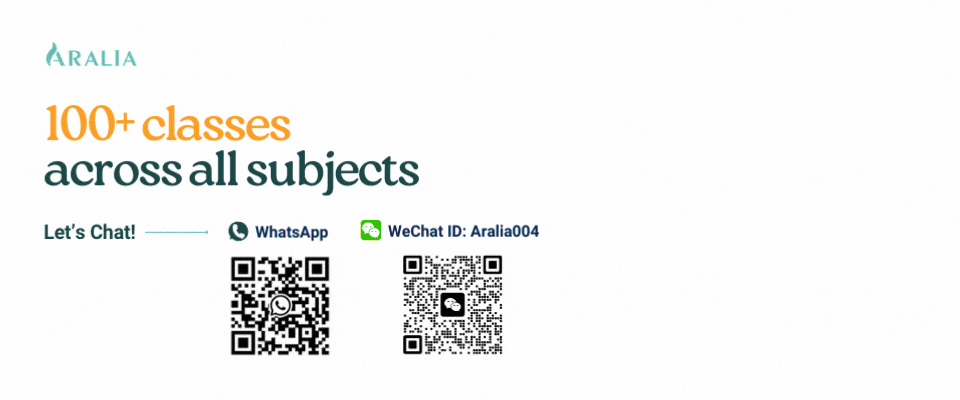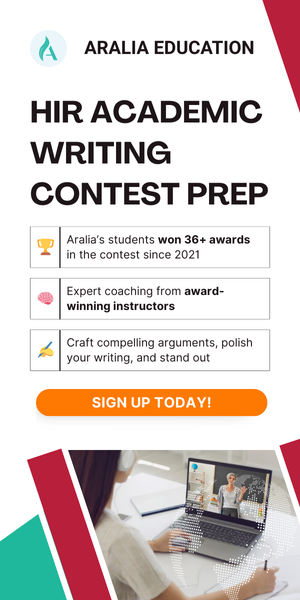Aralia Students Are 3x More Likely to Place Top Computer Science Competitions
1. What is American Computer Science League?
The American Computer Science League (ACSL, pronounced “axel”) is a non-profit organization that helps students in and outside the U.S. learn computer science. Since 1978, the ACSL competition has hosted annual online competitions for K-12 students to test their computer science knowledge and programming skills. The ACSL carefully selects the most necessary skills in our current computer science industry to test students. Participating in the ACSL contest is a great way to prepare for a computer science major or future career and to get a realistic experience of what it’s like to be a programmer.
2. What is the American Computer Science League Competition?
The ACSL Competition is an online contest for K-12 graders to test out their computer science and programming skills! Every school year, there are four 2-month long ‘seasons’ scattered between November and May. Each season has one contest, and each contest tests on different topics. While the timeframe for the contests is 2 months, it doesn’t mean each topic takes 2 months to answer—students are just given the flexibility to start the contest whenever is convenient for them within the 2-month period.
When is the American Computer Science League ACSL 2024?
- Contest #1: available Nov. 1, 2023; closes Sunday, January 14, 2024, @ 11:59 pm EST (Eastern Standard Time)
- Contest #2: available Jan. 2, 2024; closes Sunday March 3, 2024 @ 11:59pm EST (Eastern Standard Time)
- Contest #3: available Feb. 5, 2024; closes Sunday April 14, 2024 @ 11:59pm EDT (Eastern Daylight Time)
- Contest #4: available March 11, 2024; closes Sunday May 19, 2024 @ 11:59pm EDT (Eastern Daylight Time)
Check out the full ACSL Schedule.
What is ACSL HackerRank?
The contest is held on HackerRank, which is commonly used in job interviews for programmers (applicants are usually given a problem to solve live or within a short time span). If you’re interested in a future career in computer science, ACSL will be a great chance for you to get first-hand experience with this platform!
3. How do I register for American Computer Science League ACSL?
School team advisors (who are not students) may register their schools’ teams through the ACSL Registration page. To review, teams can have up to 12 students, and schools can send teams to all divisions and multiple teams to each division. The teams can choose to be scored on the 5-score or 3-score system—again, that’s scoring the team score based on the top 5 or top 3 student scores on the team. The ACSL Student Guide walks you through the steps to register and participate in the competition from a student’s point of view.
Registration fees:
$150 for 1st team (all divisions except Elementary*)
$75 fee for each additional team in the same division
*Elementary division: $100 primary team registration fee and $50 for each additional team
$30 registration fee for finals
4. How do I participate? What are ACSL Divisions?
Students compete in divisions separated by age group and skill level. For contests 1-4, students compete in teams with a maximum of 12 students. Schools can send more than one team to each division. In the final round, students compete individually. This blog will explain how students get selected to compete in ACSL Finals.
The ACSL Competition is separated into divisions, so students can join the division that best suits their age and ability. The ACSL Divisions are as follows:
- Senior: high school students with programming experience, for example, AP Computer Science (9-12th grade)
- Intermediate: high school students with little to no programming experience (9-12th grade)
- Junior: junior high and middle school students who are learning programming or have some experience (6-9thgrade)
- Classroom: open to all grades; “ideal for AP Computer Science Principles students and other computer science classes without a major programming component” (K-12thgrade)
- Elementary: open to elementary schoolers (3-6th grade)
5. What questions are on the ACSL Competition?
Each of the four contests within the same school year tests on different topics. However, contest topics are the same every year. For example, the November contest has different topics from the January contest, but every November contest each year has the same topic. Additionally, contest topics vary slightly across divisions based on difficulty.
Contest Topics:
- Contest #1: computer number systems, recursive functions, ‘what does this program do?’
- Contest #2: prefix/infix/postfix notation, bit-string flicking, LISP
- Contest #3: Boolean algebra, data structures, FSAs, regular expressions
- Contest #4: graph theory, digital electronics, assembly language
For a more detailed explanation of the contest topics, check out this webinar.
6. What is the format of the ACSL Competition?
The format of the question on the ACSL Competition differs slightly based on division. Here is a breakdown of what to expect for each division:
Senior, Intermediate, & Junior Division:
Part 1: Five short answer questions, a 30-minute time limit
Questions are multiple-choice and are math and computer science-based. This part is also known as the “written problem.”
Part 2: One programming problem, 72-hour time limit
Students typically choose to use the programming language Python to code this problem. There are multiple test cases with prompts for you to solve. For some test cases, you’ll see if you got the right answer or not; but others are “hidden test cases” where you can’t see if your answer is correct or not. Your score is based on how you performed on the hidden test cases. You can compile and test your code as you go, so don’t get caught up in perfecting your syntax. The problem doesn’t take up the entire 72 hours, and students typically only need a few hours to finish. It’s encouraged to start early, brainstorm solutions, sleep on it, and work on it more the next day.
Classroom Division:
Ten short answer questions, 50-minute time limit
Questions are non-programming problems taken from the upper divisions.
Elementary Division:
Five non-programming questions, a 30-minute time limit
Questions are focused on a single content category. Read everything you need to know about how to participate in the Elementary ACSL Division.
Unlock Your Programming Potential: Students in Our American Computer Science League Competition Preparation Class Are More Likely to Secure Awards
7. How is ACSL scored?
Teams can choose to be either 5-score or 3-score, meaning the team score can be the sum of the top 5 or top 3 student scores. Within 2 hours of completing the contest, you can find your scores on the ACSL leaderboard.
Students must accumulate a minimum of 24 points from all four contests to participate in the Finals (12 points for the Elementary Division). For the Senior, Intermediate, and Junior divisions, short answer multiple-choice questions are worth 20 points each, and the programming question is worth 20 points.
8. What is American Computer Science League ACSL Finals?
High-scoring students in all divisions will be invited to an end-of-year online Finals competition (ACSL Finals). As mentioned above, students must have earned at least 24 points from all four contests combined. The top scorers from each division will be invited via email starting on May 1st. Students who hadn’t received an invitation by May 23 didn’t qualify.
In the ACSL Finals, students compete individually, so you won’t be with the same team you were with before, and not all your team members may qualify for Finals. If your teammates performed poorly while you did very well, you’ll be selected from your team to participate in the finals round, but your teammates will not be invited. The same goes if a team did well, but an individual did not, so no student can piggyback off their teammates’ performances to enter finals. This is an individual competition, prizes are awarded based on individual scores. To qualify for finals, check the ACSL leaderboard and stay in the top 20% of individual scorers or the top 35% of team scores.
When is the American Computer Science League Finals 2024?
For the 2024 school year, the ACSL Finals will be held on Saturday, May 25. Similarly to the other four first-round contests, the final round is also held on HackerRank. The schedule is as follows:
10am EDT for Senior, Intermediate, and Junior Divisions
2pm EDT for Classroom and Elementary Divisions
5pm EDT ACSL 2024 results and winners will be announced
What questions are in the ACSL Finals?
The format for the ACSL Finals is similar to the four first-round contests, but there is an extra Zoom portion at the end.
- Part 1: Students start with a “Programming Test” with 2 problems (20 points total) and a 3-hour time limit. This is for all the students competing in the Senior, Intermediate, and Junior Divisions.
- Part 2: The students in Classroom and Elementary Divisions join in and all students are tested on “Short Problems” with 20 questions and 1-hour time limit.
- Part 3: All students join for ACSL alumni-led breakout discussion rooms on Zoom.
- Part 4: Results and medal winners will be announced with a Live Stream.
Watch the ACSL 2023 Finals!
9. Why should I participate in American Computer Science League?
ACSL Awards and Scholarships
The ACSL Competition awards both team and individual prizes—team for the four first-round contests, and individual for finals round. Top students and teams from each division with the highest score will receive certificates as well!
Is ACSL good for college?
Colleges like to see you apply your interests in more ways than just in the classroom and studying. Especially with computer science, you have to practice in scenarios outside of homework in order to improve. Programming is one of those skills that’s all about learning through trial-and-error.
The ACSL Competition’s contest topics focus on the most relevant and in-demand skills currently in the computer science field. Even if you don’t win an award, just participating in the ACSL Competition and getting exposure to the HackerRank platform will gear you up for a computer science major or career, providing a real-world glimpse into life as a programmer.
How prestigious is ACSL?
The ACSL is a very popular competition! Historically, around 8,000 students from 300 schools across the world have participated in ACSL competitions. Generally, ACSL is viewed as a good step to prepare you for other coding competitions. Take a look at some other even more prestigious competitions, such as USA Computer Olympiad USACO and International Olympiad in Informatics IOI, to see what your next steps are!
10. How to prepare for American Computer Science League?
Start preparing for the American Computer Science League Competition by reviewing the official ACSL Study Materials. These study materials are categorized based on Division so you can test out all the different levels to pick one most suitable for you. Check out this webinar for a more detailed explanation of the different contest topics– such as number systems, prefix/postfix/infix notation, and more. Another resource to check out is this analysis of the 2022 ACSL Senior Contest blog written by Shubham Bhatnagar.
It’s important to practice solving sample problems multiple times before the exam. The ACSL provides past problems and their solutions. Reviewing solutions and understanding different approaches to the same problem can also provide deeper insights into effective problem-solving strategies.
- Contest #1, Intermediate Division: Short Problems | Programming Problem
- Contest #2, Junior Division: Short Problems | Programming Problem
- Contest #3, Classroom Division: Short Problems (Non-Programming portion)
- Contest #4, Elementary Division: Short Problems (Non-Programming portion)
In addition to the ACSL sample problems, online resources are available to help you prepare for ACSL. Khan Academy, Coursera, and Aralia Education offer courses on related topics and competitions for a while. Additionally, platforms like HackerRank provide many coding challenges that can help you practice programming under timed conditions.
12. Prepare for American Computer Science League with Aralia Education
Overall, the best way to prepare is with a dedicated, experienced tutor specializing in taking students to success in the ACSL Competition. Consider Aralia Education’s ACSL Competition Prep Class. With our expert teachers vetted exclusively from top-ranking US boarding prep high schools and intimate class sizes (no more than 12 students), Aralia’s students are always ahead of the game for the ACSL Competition! Not only will you learn from our teachers, but also from your peers—some of our previous students who participated in the ACSL class hailed from Choate Rosemary Hall, Concord Academy, Groton School, and Cardigan Mountain School.
Aralia’s ACSL Competition Prep program begins with two weeks of dedicated programming practice to provide participants with an opportunity to enhance their skills. Subsequently, each of the 12 ACSL topics are allocated a two-week period, allowing ample time for in-depth exploration and understanding. Prior to each contest, participants are presented with two programming problems that are intentionally unrelated to the current topics. These problems are designed to enhance the coder’s skills and foster comfort in tackling diverse challenges.
Reach out for more information!
Aralia Courses

The program begins with two weeks of dedicated programming practice to provide participants with an opportunity to enhance their skills. Subsequently, each of the 12 ACSL topics is allocated a two-week period, allowing ample time for in-depth exploration and understanding. Prior to each contest, participants are presented with two programming problems that are intentionally unrelated to the current topics. These problems are designed to enhance the coder’s skills and foster comfort in tackling diverse challenges.










